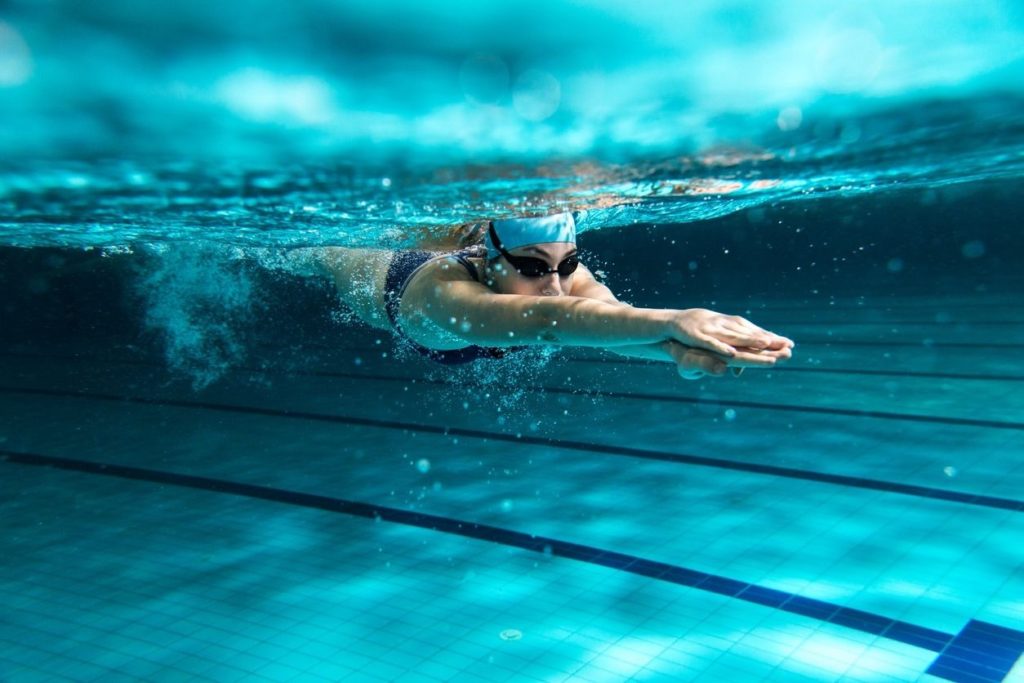Swimming: do I get out of breath quickly while doing the front crawl?
Caution : You must consult your doctor for your health. This page presents only a personal and alternative point of view which should not be considered as an attempt to prescribe medicine.
The crawl is a swimming technique that takes a lot of effort.
It uses all the muscles and you can quickly get tired if you swim badly.
Reasons for shortness of breath in swimming
You probably didn't learn to swim while crawling.
There are four swimming techniques that you can find in major competitions such as the Olympic Games for example: breaststroke, crawl, backstroke and butterfly.

You can feel good swimming the breaststroke while you tire quickly on the front crawl.
Here we will focus exclusively on it because it is a trying swim.
There can be several explanations for the phenomenon of breathlessness in crawl:
- Bad posture in the water
This is the number one cause of shortness of breath when swimming.
Poor positioning will create a large drag in the water.
Very often, in front crawl, the legs and pelvis of the swimmer are too deep in relation to the shoulders.
There is therefore a lack of horizontality, which gives an anchor position.
However, in this case, you have to pull your body, which considerably increases the effort.
Shortness of breath and fatigue can happen quickly.
The solution is then to sheath the whole body to be more elongated.
- Kicking the legs
You know, the crawl technique consists of using the arms but also kicking the legs.
Muscle mass in the lower body is important and moving it is a certain expenditure of energy.
Watch when you kick your legs hard without moving, your heart rate increases and you tire quickly.
If you want to swim the front crawl for a long time without getting tired, you have to learn to kick your legs lightly.
The kick of the legs should be used above all to keep the lower body in line with the shoulders and the upper part of the body.
- The amplitude of the arms
When you swim the front crawl, you need to optimize the distance covered with each stroke.
This does not mean having to swim as far as possible with each stroke, you will quickly run out of breath.
To correct this, you don't simply have to lengthen each stroke while keeping your arm relaxed out of the water, even if it means swimming a little slower.
This little trick will allow you to swim more lengths and therefore not get tired quickly.
Tips to stop running out of steam
We have just seen what problems can cause bad posture in the water.
The solutions mentioned above will already allow you to improve your technique and therefore less fatigue in the water.
In addition, we will have to integrate small habits that will reduce this feeling of shortness of breath.
Hydrate and eat properly before and after, because you know swimming uses a lot of energy.
Stretching can also be a key to resolving any breathing difficulty you are experiencing.
Finally, in swimming as in life, it is essential to work on your breathing.
Loris Vitry is a breathing coach who will help you free your diaphragm.
The video workshop he has developed contains examples and concrete exercises that will make your life easier.
You will then feel like a fish in water!
❤ The ultimate guide to breathing
Intermittent Breathing : Discover the method to quickly relieve your anxiety and chronic fatigue (positive effects from the first use).Read also :
Previous article : I quickly get out of breath when I sing: what solution?
Next article : I run out of breath going up the stairs: is this normal?

